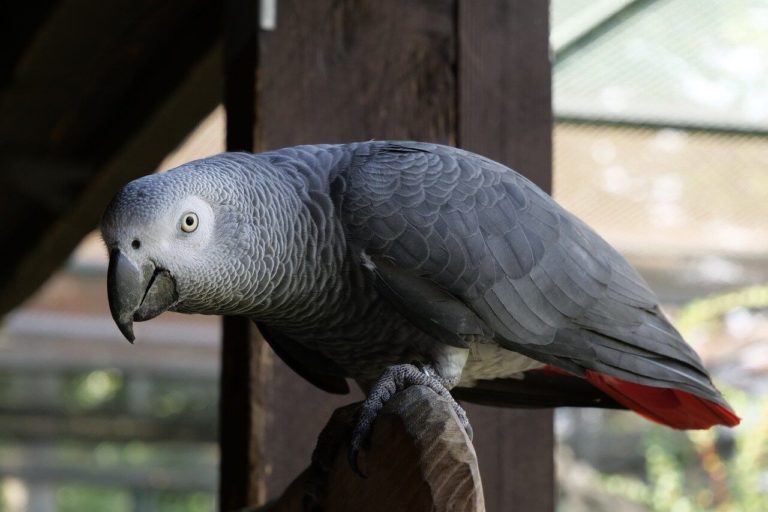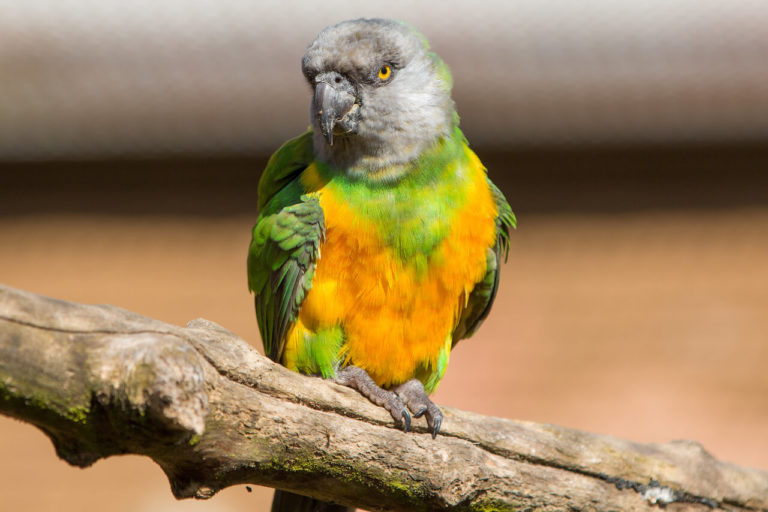Profile







Breed History And Origin
The Blue-fronted Amazon originates from South America and have a very large distribution area, which in its longitudinal extension covers more than 3000 kilometers. It extends from Bolivia and Brazil to Paraguay and Northern Argentina.
Because of its playfulness, but also because it has been imported thousands of times, the Blue-fronted Amazon is one of the most popular large parrots. It has been kept as a pet for several decades now.
The Blue-fronted Amazon (Amazona Aestiva), occasionally called the Red-fronted, Yellow-fronted or Yellow-winged Amazon, is a species of the Amazon parrot genus.
The Amazona versicolor, which also belongs to the Amazon parrots, is occasionally called Blue-fronted Amazon. For this species, however, the name Blaumaskenamazone has prevailed in German-speaking countries.
The Blue-fronted Amazon is one of the most common parrot species kept in captivity, along with the Gray Parrot.
There are no population figures available for the Blue-fronted Amazon. It is still considered common in most of its range, and is still classified “Least Concern” by the IUCN, meaning it is not endangered.
Appearance Of The Blue-fronted Amazon
The birds have a size of 33 to 39 cm with a weight between 400 and 660 grams. The sexes are hard to distinguish externally. Females tend to be slightly smaller, however.
The length of the strong gray bill varies between 2.9 and 3.3 cm. The tail is between 11 and 14 cm long, and the wingspan is about 22-24 cm.
The Blue-fronted Amazon has green plumage with dark fringes on the feathers. Around the ears, on the cheeks, on the chin and throat the feathers are yellow. On the other hand, the forehead and front of the head are bright blue. Otherwise, the face and head are yellowish, mostly bluish washed out and changing to green. The eye color of the Blue-fronted Amazon is red-orange.
The wings are green with blue, red, and purple markings, while the majority of the feathers are fringed with black. The wing feathers are red, so the Blue-fronted Amazon is also called the Red-fronted Amazon.
The short tail feathers are green, if they fan out, red, blue and yellow stripes can be seen. Legs, beak and wax skin are grey.
When the bird fluffs up, the red wing markings and the red band on the tail form a semicircle. The many color variations affect the head in particular.
In the meantime, however, there are already many different color breedings.

Character And Nature
Blue-fronted Amazon fly ponderously and not very fast, but climb excellently and skillfully. The birds waddle rather than walk. They quickly become trusting and some of them also learn to talk.
The Blue-fronted Amazon is not a shy bird even in its native habitat, it quickly becomes tame and bold even when kept in pairs.
After sexual maturity (at five to ten years of age), even tame individuals can change their nature and loudly screech or aggressively express their desire for a bird mate.
Blue-fronted Amazon parrots are extremely social, living together in a large flock outside of the breeding season. They are often joined by other Amazon species. During the breeding season from October to March, they live as a pair, and the bond between the two partners is very strong and can last a lifetime.
When foraging, the birds are rarely seen alone. They usually seek out their feeding sites either in pairs or in small groups of six to eight individuals.
Like many parrot species, Blue-fronted Amazonians are capable of hooking or hooking with their beaks and dragging their entire body weight. They are also able to hang upside down from a branch, using only one foot to hold their body weight if necessary. If Blue-fronted Amazon move along a branch, they usually do so in a lateral pushing motion.
Habitats Of The Blue-fronted Amazon
In their large range, Blue-fronted Amazon use a wide variety of habitats. They tend to be a bird of the forested lowlands, although representatives of this species are found on the Brazilian plateau and in the dry valleys of the Chaco up to altitudes of 1600 meters.
Due to their dependence on tree cavities, they always depend on a stand of old trees in their habitat. However, starting from such stands of trees, they also use open cultivated land and areas of savannah character for foraging.
Reproduction
The female lays between one and five eggs, which are incubated by her alone. Meanwhile, the males are so caring that they protect the eggs from the rain in the wild with open wings.
The female usually begins incubation only after the second egg has been laid. The eggs are incubated between 25 and 26 days.
The young do not leave the nest until the plumage is fully developed. On average they are then fifty days old. The young birds are sexually mature at the age of five to six years.
Keeping The Blue-fronted Amazon
If you keep the Blue-fronted Amazon individually, you must devote at least eight hours a day to it, otherwise two animals are recommended. With other Amazons of the same size the Blue-fronted Amazon gets along, if both move into the aviary at the same time. Amazons get along well with partners of the same sex. According to the Animal Welfare Act, the aviary must have a floor area of three square meters.
The bars should be at least three millimeters thick, because the temperamental parrot has an enormously powerful beak. The perches should be of different thicknesses and made of hardwood.
Ideal for free flight is a ceiling-high lounge tree, on which the Amazon has a good overview of its kingdom, can run around and live out its play instinct.
Nutrition And Care
Blue-fronted Amazons are basically classified as food generalists, using a wide range of different food plants. In their habitats, they forage primarily in the crowns of trees, using mostly different species of palms, whose fruits they eat in varying degrees of ripeness.
When kept at home, parrot food serves as the basic diet. In addition, the Amazons need fresh fruit, vegetables and greens every day. They also add freshly cut branches from willow, nut or fruit trees, including chestnut, which have buds, bark, flowers, leaves or fruit depending on the season.
Amazons use their toes to hold food. Therefore, at least once a week you should give them a good shower.
Life Expectancy Of The Blue-fronted Amazon
If kept appropriately, Blue-fronted Amazons can live to be 40 years old.
Health And Typical Diseases
Behavioral disorders often occur in Blue-fronted Amazon due to inappropriate single keeping.
Fungal diseases of the respiratory tract are very frequent, which are favored among other things by the feeding of stale nuts and a too low air humidity.
In addition, Amazons with one-sided grain feeding tend to various disease complexes (e.g. vitamin A deficiency, vascular calcification, fatty liver).
Decision Support
Blue-fronted Amazon are demanding and require expert husbandry and care. Be sure to provide the birds with as varied an environment as possible with climbing trees, nibbling and playing equipment.
They are considered possessive towards conspecifics and humans. Often the parrots attach themselves to their owner and demand intensive attention.
As kind-fairly however only a pair-wise attitude in roomy aviaries is considered, with which on taming attempts is renounced to a large extent.
Because Amazons can also become aggressive, the acquisition must be well considered. Especially during the mating season they defend their territory vehemently. In this time the aviary can be entered only in protective clothing.
FAQ About The Blue-fronted Amazon
Parrot food is a basis for the Blue-fronted Amazon’s food. In addition, the birds love fruits, vegetables and green fodder.
Blue-fronted Amazons can live 30 to 70 years.
They live to be 30 to 70 years old.
Blue-fronted Amazon can cost between 200 to 1000 euros.
Blue-fronted Amazons can learn to mimic environmental sounds and human words.
Sources
https://herz-fuer-tiere.de/ratgeber-tier/voegel/ziervogelarten/amazonen/steckbrief-blaustirnamazone













1 thought on “Blue-fronted Amazon”